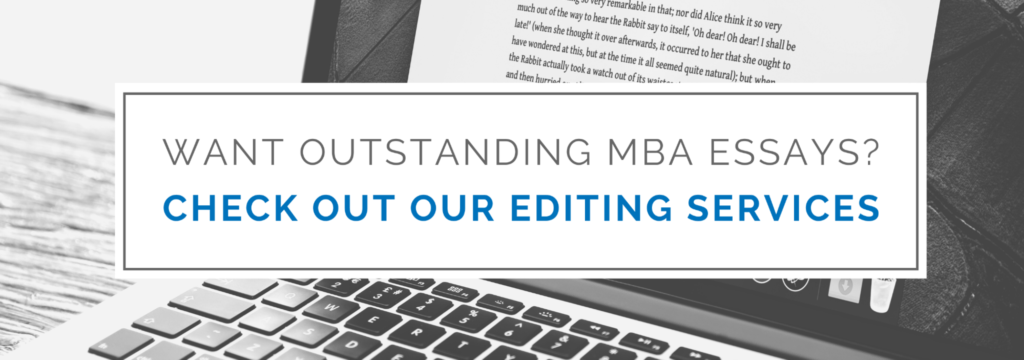When writing your MBA essays, one of the most important things to think about is making yourself and your stories memorable to the adcom. Just like a story, song, or film, the beginning and ending are what the audience remembers most. And in the case of you, the MBA applicant, writing a memorable introduction and conclusion is essential to standing out amongst thousands of other candidates.
However, most of us aren’t experts in writing, so this can be an overwhelming task.
That’s why we’ve compiled our top tips for writing captivating introductions and conclusions – so you can quickly understand how to make your ideas stand out!
How to write a captivating introduction
The introduction paragraph frames the rest of your essay, and is often the very first impression your readers get of your experiences, motivations, and values. It’s how you draw in your reader, so it’s important that you create a relevant and interesting first paragraph. There are many ways to do this, but here are our top tips for making it as engaging as possible!
Make a hook sentence
First impressions matter, and your first sentence is your opportunity to really engage the reader and set your tone. There are many ways to create an interesting hook sentence, but some of the successful techniques our clients have used include giving interesting facts, using quotes, asking questions to invoke empathy, beginning with bold statements, or putting the reader in the middle of a situation that you will explain throughout the intro paragraph.
For example, this was how one of our clients started one of her essays:
“My name is Tinan Goli, and I am from the Ivory Coast. My name, Goli, means “panther,” the sign of a protective divinity. My ancestors walked from village to village to cure diseases and protect people from natural disasters.”
This sentence not only starts an interesting story about the applicant, but also leaves some big questions for the reader to wonder about, such as, how has this applicant fulfilled the expectations of her name in her career? This idea sounds interesting — how has this played out in her life?
This is what you should aim for in your hook sentence – propose a relevant idea that shows the reader that you are going to make an important point later on.
Tell a story

In their intros, many applicants make the mistake of simply summarizing what they are going to write about in the rest of the essay. However, try to remember the importance of showing and not telling.
To give the reader an idea of your theme, think of an example or story that best represents this idea. What is the main point you want to get across, and what is a good metaphor to immerse the reader in that idea without giving them details?
For example, one of our clients, in writing about her commitment to women’s access to healthcare, wrote this introduction:
“”Tic-tac-toe, three in a row,” a particularly unaware uncle jested in a thick accent on the phone. When I was born, my parents received condolences from family. Another daughter, what a shame. Those commiserations, which my family later told me about, have stayed with me. My father did his part to ensure my sisters and I were well-armed, starting with our name. My father’s last name, “Talukder,” or “landowner” in Bengali, could not be given to us because women couldn’t own land in Bangladesh. While my sisters were born there with the feminine last name “Sultana,” my father invented the last name “Hydery” for us all to bear in America. But it wasn’t just a name he gave us; he was also providing us the license to pursue activities beyond traditional norms.”
This story is not simply well told; it provides a window into the applicant’s motivations for focusing on women’s well-being in her career. It paints an interesting picture, while also giving context to where her passions first developed.
At ELC, we often encourage our clients to think of the main events in their life that put them onto their current career path. Whether you are an engineer who was passionate about building legos when you were a child, a consultant who realized the power of community impact during your high school volunteering experience, or a manager who realized the effectiveness of diversity while traveling, you certainly have plenty of stories that can engage the reader on what is important to you!
For more on how to tell an engaging story, see our post on storytelling.
Discuss something that makes you stand out

Think of an example from your life, even your childhood, that illustrates how you stand out today in your professional life. You can use this to introduce something important about you that has persisted into your current approaches and goals.
Take the following example:
“When I was four years old I decided to challenge conventional notions of the human limit by flying through a glass window. The impetus was Superman, whose exploits on television had induced my experiment. Nine stitches and thirteen years later, while I no longer attempt to be stronger than steel or faster than a speeding bullet, I still find myself testing my limits, mental and physical.”
Note how this story emphasizes a key strength of the applicant — their resilience and desire to grow — and that it begs the question, how has this person demonstrated this strength since then? Introducing key ideas in this way is an excellent way of showing continuity, uniqueness, and establishing a theme.
Discuss a problem or issue
Many of our clients have crafted very effective introductions by introducing the problem or issue they are most passionate about. Not only does this provide the reader with an interesting thought from the beginning of the essay, but it also allows you to justify the context behind your career choices and/or goals.
For example, if you are committed to pushing for a shift to environmentally-friendly investments in private equity, you could center your introduction paragraph around the current state of private equity investments and how that negatively impacts the climate.
By showing the reader the magnitude or importance of an outstanding problem from the beginning, they are likely to wonder what ideas and skills you might offer to solve it and invite them to read on!
How to write a captivating conclusion
While the introduction serves to engage the reader, the conclusion’s main purpose is to ensure the reader remembers you and the story you’ve told. There are a few strategies that can help you achieve this:
Synthesize, don’t just summarize
While you certainly should tie your stories together and reiterate your theme in the conclusion, this is your chance to do so in a different way that invokes development and/or the future. For example, you can discuss your theme, but in a way that recognizes the key ideas and lessons learned from everything you discussed.
Remind the reader of the ideas you have presented, and how these contribute to your main idea in a reflective way. Try to convey some closing thoughts on the larger importance of your theme, and broaden your focus.
We often recommend that clients discuss their main idea in a future-oriented way. For example, if your theme is the importance of empathic leadership, you can summarize all the lessons you have learned and discuss how you have changed and why this is important, or how you plan to use those lessons in the future.
One of our clients crafted the following conclusion:
“These experiences engraved within me the value of compassion in times of need. Like my ancestors, I feel it is my duty to protect the vulnerable and disadvantaged. My aim now is to create an ideal world where everyone has a place, and minorities no longer feel minor, but equal.”
Notice how this applicant summarizes the connecting link between her stories, and how this relates to her main motivation in her career. But she doesn’t stop there — she uses this synthesis to talk about her vision and how she will use these lessons in her career.
Putting your ideas into a plan for the future is an excellent way of convincing the reader that your examples and points are not only meaningful, but useful and relevant.
Talk about your vision

One way to make sure your conclusion leaves a lasting impact is by talking about the bigger significance of your ideas, which can easily be done by talking about your vision. The questions we usually ask our clients are: What is the bigger importance of my goals? What bigger change do I want to contribute to? What difference do I want to make?
However, don’t take this too far. Avoid cliches, overgeneralizations, and unrealistic ideas.
Some clients have said things like “I want to save my country” or “I hope to make a positive impact.” Statements like these are too broad to actually paint a clear image. So while you can discuss a bigger change that you want to see, make sure it is still relevant to your own specific goals and focus.
Discuss the MBA program you’re applying to
Another technique you can employ is to link your ideas to how you will fit in at your school of choice. Think of specific aspects, values, or opportunities at the school that directly match the most important points of your essay, and explain how those things will add value and allow you to achieve more in the future.
For example, one client wrote:
“In addition to building my own, personal network, HEC’s ‘unique approach to leadership’ emphasizes theory alongside practical application, something I think is particularly suited for the challenges facing [the future company I will work at]. I particularly look forward to participating in the seminar at Saint Cyr as well as in Station F. This approach led me to choose HEC, and one I hope will pay high dividends for myself, the region, and HEC’s regional network in an ultimate win-win deal.”
This approach is particularly effective for showing how your stories and examples are relevant to the school you’re applying to, emphasizing that you are a uniquely good fit for their environment. It will also show that you’ve done your research, which is likely to impress the readers!
Maximize the effectiveness of your intro and conclusion
With a busy schedule and multiple applications and tasks to attend to, sometimes it is hard to take the time to learn how to craft engaging stories and ideas, let alone write them out in a charismatic and eloquent way.
In this case, an MBA consultant may be able to help. And this is exactly why our expert team is here – to help you bring out that “oomph” in your essays and express your experiences, ideas, and strengths in a way that really makes you stand out among the rest.
Our top-notch editors have the writing experience and understanding of MBA programs to support you to write the perfect introduction that really catches the adcom’s attention and an ideal conclusion that highlights the importance of your career path.
To start getting expert support, check out our editing services! Since we work closely with each story, we have limited capacity, so make sure to book early 😉
Real MBA Essays That Got People In
School-specific sample essays that got our clients accepted






